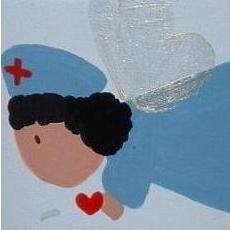For many foreign nurses (RNs) the chance to immigrate to the
The shortage spurred the growth and creation of hybrid industries such as nurse registries and temporary nursing staff companies. These types of companies assign nurses on a temporary basis with their client hospitals, medical facilities, and private homes.
A nurse working for one of these companies for example, might find herself working at Hospital A for 2 days out of the week and Hospital B for 3 days. Then, a few months later, working 4 days for Hospital C. The RN goes wherever her employer has been contracted to provide services. She is not an employee of the hospital, but rather the registry company.
Because of the shortage, various RN employers (hospitals, agencies, RN staffing companies) heavily recruit for RNs overseas. Foreign RNs who wish to immigrate are delighted at the opportunity the recruiters offer and are often all too eager to sign up.
While this path may be one of the easiest ways to immigrate, it is not without its pitfalls. Employment-based sponsorship means the RN will be allowed to immigrate if the RN intends to work on a permanent basis for the petitioning employer. This is a critical condition of immigrating that carries consequences if not fulfilled.
During the typical recruitment process, the RNs are promised sponsorship in exchange for working for the employer. Contracts are prepared and representations are made regarding the nature of work, type of work, place of work, working conditions and wages. Many RNs are so eager to immigrate, they do not carefully read these contractual documents, ask serious questions regarding the terms and conditions, or have the contracts reviewed by their own attorney. In the excitement of the prospect of immigrating to the
The most common contractual clause that wreaks havoc on an immigrating RN’s life is the breach of contract damages clause. Most contracts typically require the RN to work for a specific number of years and failure to do so triggers the damages clause. The damages can range from $15,00 to $50,000 dollars!
Many RNs signing these contracts are unfamiliar with the litigious culture in the
For example, being placed in graveyard shifts in hospitals far from home. Or, not being placed in any hospital and collecting no salary while the sponsor tries to obtain a new client for the RNs placement. Many of these RNs then leave their employers and this is when additional tragedy strikes.
The employer begins a campaign of harassment and may sue for breach of contract and obtains a judgment against the RN for the penalty amount. The judgment typically comes with a wage garnishment order. This means the RN’s new employer is required to pay a portion of the RN’s wages to the sponsor to cover the judgment. Because RNs are in a licensed occupation requiring a reporting of where they work, it is very simple for the sponsor to locate the RN and exact the judgment.
But, worse than a breach of contract is the possible immigration consequence. The RN has obtained permanent residency because she stated she intends to work on a permanent basis for her sponsor. By leaving or changing employers shortly after entering the
For many others, the immigration consequence comes several years later when the RN is applying for
These tragic consequences can be avoided by careful review in the beginning. For many of those currently in the position, there is still immigration and contractual relief available. The U.S. Constitution prohibits slavery and indentured servitude and because in many cases the sponsoring employer breaches the contract, the employee is not liable for any damages. This core constitutional value is the basis for providing relief to those forced to leave their sponsors. This will be the subject of our second part of this article.
Author's Note: The analysis and suggestions offered in this column do not create a lawyer-client relationship and are not a substitute for the individual legal research and personalized representation that is essential to every case.









